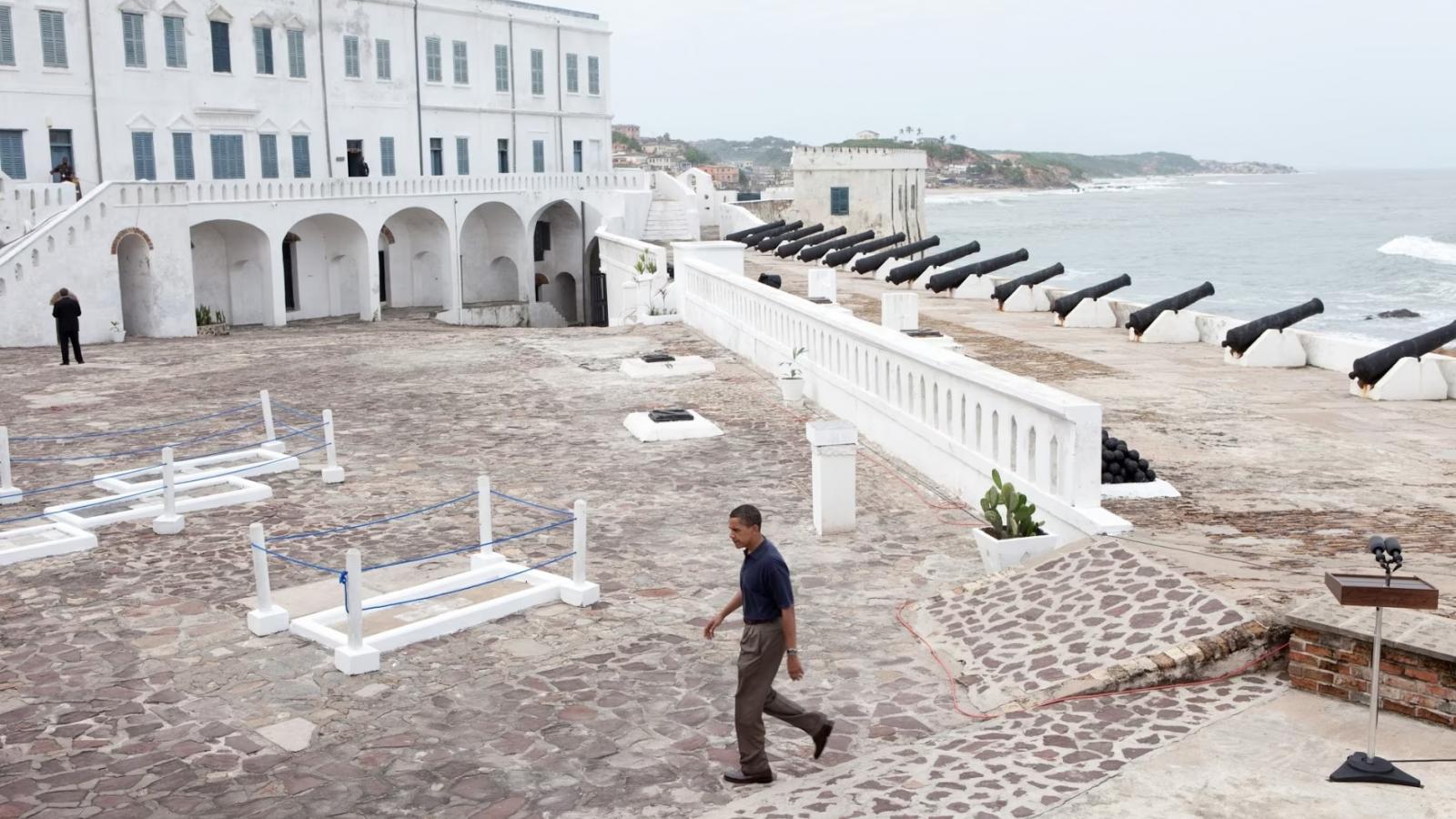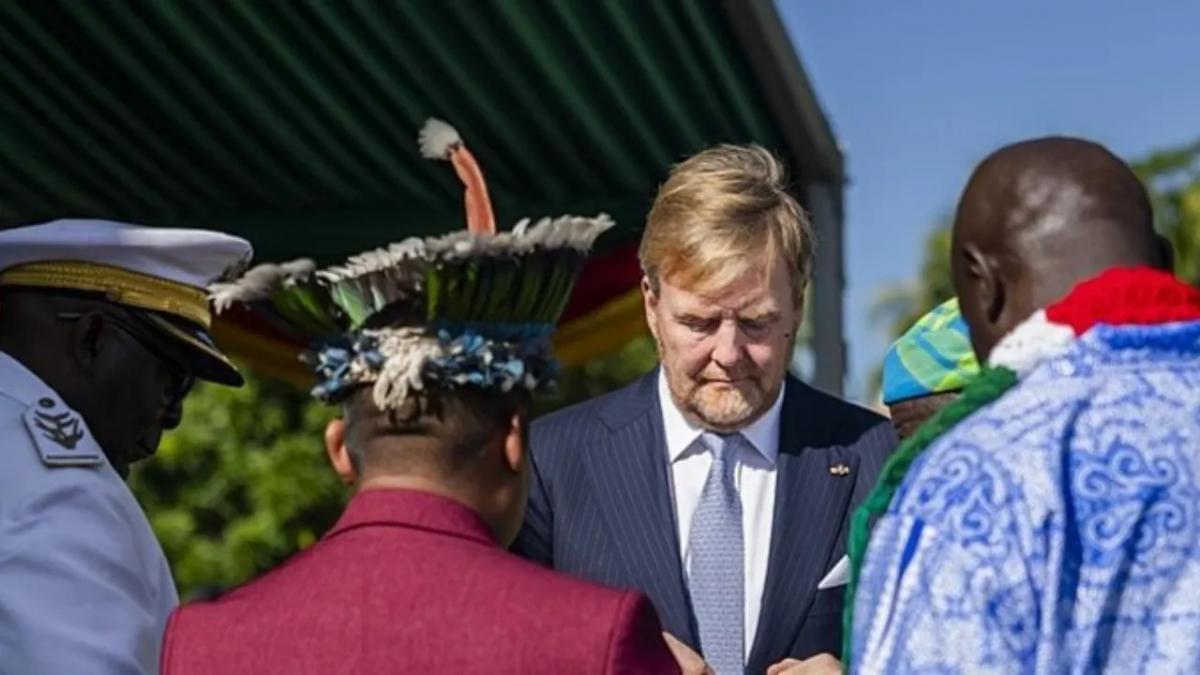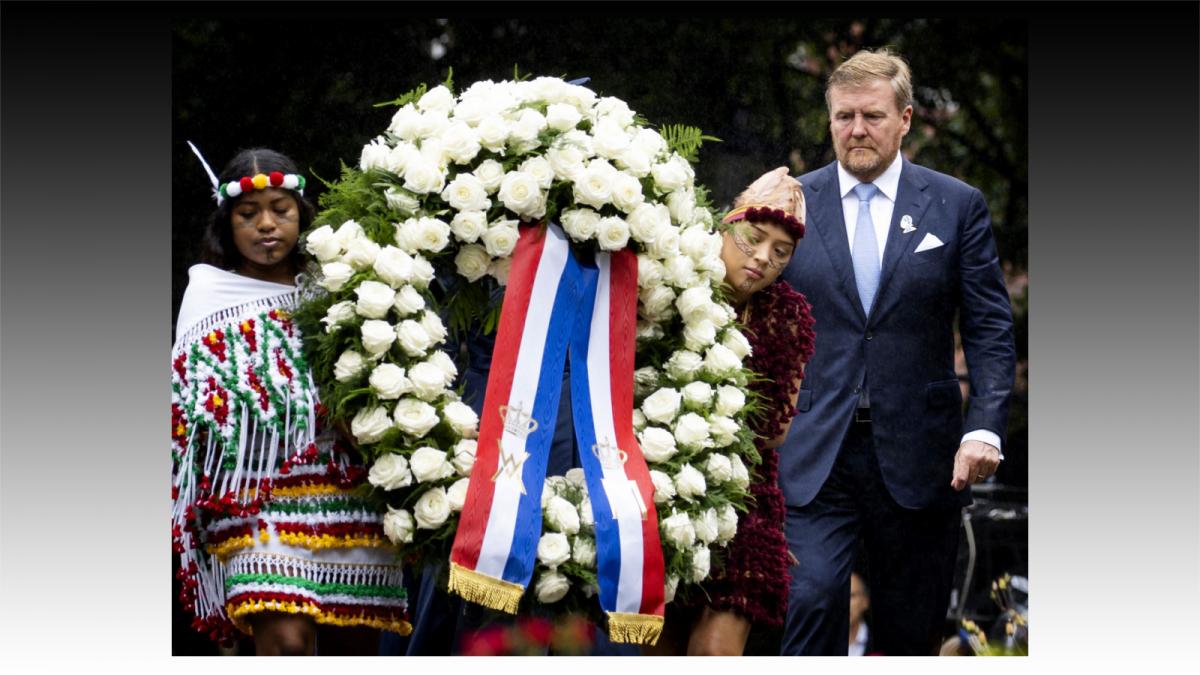10 African nations involved in the slave trade

The slave trade was the horrific trafficking of Africans as slaves to the Americas, Europe and Middle East. Between 1500 AD and 1890 AD, over twenty-two million (22,000,000) Africans were sold into slavery (R.A. Austen 1979). Seven million (6,856,000) were sold east: 3,956,000 were sold across the Sahara and 2,900,000 were sold across the Red sea and the Indian Ocean (R.A. Austen 1979). Fifteen million (15,000,000) were trafficked across the Atlantic. 70% of all Africans sold into slavery in the Americas were transported by Portugal and Britain. Sadly, a few African nations took part in this Atlantic slave trade. Here are a few of them.
1. Dahomey
The Kingdom of Dahomey was a West African Kingdom located in present day Benin. They were a major source of slaves for the Atlantic Slave trade, raiding nearby settlements for slaves. In the 1720’s, King Agaja [1] expanded the Kingdom with the takeover of the kingdom of Allada in 1724 (which controlled Porto Nuovo a key port for the slave trade in West Africa) and the kingdom of Whydah in 1727 (which controlled another slave port of the Atlantic Slave Trade, Ouidah). With the coastal slave trade cities in the hands of the Kingdom of Dahomey, they became known as the main market for the export of slaves and were hugely involved in this trade, and profited from it. The Kingdom of Dahomey raised the prices of slaves which attracted the attention of the more powerful Oyo Empire, resulting in their defeat in the 1740’s and tributary status for 100 years. The involvement of the kingdom of Dahomey in the Atlantic slave trade continued until 1852 when Britain which had been one of the hugest customers of the slave trade forced the Dahomey Kingdom into ending the slave trade. To understand the importance of the slave trade to the monarchy of Dahomey, King Gezo had the following to say in the 1840s:
“The slave trade is the ruling principle of my people. It is the source and the glory of their wealth…the mother lulls the child to sleep with notes of triumph over an enemy reduced to slavery…”
Dahomey therefore could not be left off the list of African nations involved in the slave trade.

2. Morocco
The Alawite Dynasty was a Kingdom in Morocco which took part in the Trans-Saharan slave trade. The main slave markets for supplying slaves were in Morocco in Tangiers, Marrakesh and Fez where slaves were sold on the streets. During the many wars for expansion that the Alawite Dynasty fought, they captured many Africans and sold them as slaves to the Middle Eastern Empires. They also raided many African towns and were a center for the Arab slave trade. The slave trade finally ended in 1950[2].
The rules governing the slave trade in Morocco, and the rest of North Africa, was different to European laws controlling slavery because under Islamic law, slave women who gave birth to any children of their masters had to be freed along with their children. Such concubines received the title of the “mother of a child”. Their children were eligible to inherit property from their fathers and to be treated like free children. For instance, a son from a privileged family became entitled to receive education in the same way the son of a free wife had to be educated. This resulted in some Sultans, judges, and prominent government officials having slave ancestry. Slaves in North America however became trapped into perpetual slavery. A son of a free man born to a slave woman remained a slave in North America.
Another difference is that while Morocco sourced slaves from Sub-Sahara Africa by raids and trading, it also sourced slaves from Europe, through the activities of Barbary Corsairs who were willing to capture and enslave Frenchmen, Dutchmen, Greeks, Portuguese, Italians, the Irish, Scandinavians, Russians, Georgians and any other nationalities sailing in inadequately armed sea-faring vessels. The largest group of Europeans enslaved by the Moroccans were the Spanish.
This puts Morocco firmly on the list of African nations involved in the slave trade.
3. Ottoman Algeria
The Regency of Algiers was a state in Algeria that lasted from 1518 to 1830, and it was part of the Ottoman Empire. They were huge players in the slave trade, enslaving both Africans and Europeans that they raided along with the Barbary pirates[3]. They had huge slave markets with thousands of slaves sold through the trans-Saharan slave route. Their slaves were acquired through trade, through raiding and through expansion wars. The slave trade lasted till 1830 when war with the French led to the end of Ottoman rule of Algeria.
4. Egypt
Egypt was a major player in the Trans-Saharan and then the Atlantic slave trade. It started in 641 AD with the Muslim Conquest of Egypt by the Rashidun caliphate. With that, the trade route from Egypt to Mecca and the Middle East was established. The trans-Saharan slave trade thus began in Egypt[4]. Later on, Egypt became part of the Ottoman Empire in the 1500’s. It is estimated that millions of slaves were taken from Egypt to Asia. It ended in the 1900’s after immense pressure by the British after Egypt defaulted on its debts. With one of the longest histories of involvement in the slave trade, Egypt had to be on the list of African nations involved in the slave trade.
5. Kanem Bornu
The Kanem Bornu Empire was based in parts of current day Cameroon, Chad and Nigeria. It lasted from 700 to 1900 AD. The principal trade commodity of the Empire around 900 AD was in slaves, with around 5,000 slaves traded annually by the end of the 15th century. Initially, the slaves were sold in the trans-Saharan slave trade, but eventually they took part in the transatlantic slave trade as well, with around two million slaves having walked through the slave route in their Empire[5]. They raided non-Muslim neighbouring kingdoms for slaves to boost their economy in times of need. Eventually, Kanem Bornu was invaded and thus the slave trade ended.
6. Kingdom of Allada
The Kingdom of Allada was a coastal Kingdom located in Southern Benin. It reached the peak of its power in the 16th century when it was a center of the Atlantic Slave trade, being a huge source of slaves. Slaves were captured by raiding and attacking enemy kingdoms. These slaves were then traded on to the European slavers who were bound for America[6]. As a coastal city, Allada was a major port for the slave trade along the Atlantic coast and continued to be even after the end of the Kingdom of Allada. In 1724, the kingdom of Dahomey invaded the Kingdom of Allada and ironically, many of their citizens were then sold into slavery. Though a relatively small kingdom, Allada was significant among the African nations involved in the slave trade.
7. Aro Confederacy
The Aro Confederacy was a political union located in present-day South-Eastern Nigeria. The Igbo who were part of the Aro Confederacy were one of the leading exporters of slaves to Europe and the Americas from 1690 to 1902[7]. Estimates indicate that 850,000 slaves were exported overseas. The Aro confederacy was therefore a major player among African nations involved in the slave trade. Once the Aro gained the upper hand in the slave trade, they launched many raids and wars to capture more slaves. The Aro confederacy united around the Chukwu – Great Spirit – oracle of Aro and these shared beliefs made their region a unified trade network.
8. Ashanti Empire
The Ashanti Empire was an Empire based in current day Ghana. They were formed in 1700 and took part in the slave trade until the 19th century [8]. The economy of the Ashanti Empire was based on the trade of gold and slaves, while their army mainly served as a tool to capture more and more Africans and force them into slavery. Captives in war were taken as slaves to be either treated as slaves in the Empire or be exported across the Atlantic Ocean to the Americas.
9. Songhai Empire
The Songhai Empire was one of the largest states in African history and was located in Western Africa. The slave trade was a huge part of the Songhai Empire [9]. Slaves were used extensively within the Empire itself to transport goods, while literate slaves stood a chance of becoming government officials, but many were also exported in the transatlantic slave trade via European slavers. The slaves were often procured in raids and in wars with neighbouring nations, especially from the neighbouring Kru and Baga nations.
10. Mali Empire
The Mali Empire was based in current day Mali from 1235 to 1670 AD. They were hugely involved in trade but also the trade of slaves through the trans-Saharan trade route. Slave labour was common and so was the export of slaves. Thousands were enslaved in raids and wars waged by the Mali Empire over the years[10]. Slavery was finally abolished by the French after Mali was colonized, though some descent-based slavery still happens in Northern Mali.
Concluding Remarks
The slave trade was a horrific event that exploited the people of Africa for personal and material gains. It is sad that many African states took part in this unfortunate and tragic exploitation of people for material gains. The stain of slavery set Africa back decades and had a huge impact on the African people.
Sources
- Law, Robin. “Dahomey and the Slave Trade: Reflections on the Historiography of the Rise of Dahomey.” The Journal of African History, vol. 27, no. 2, 1986, pp. 237–267. JSTOR, http://www.jstor.org/stable/181135. Accessed 12 Mar. 2021.
- John Wright (2002) Morocco: the last great slave market?, The Journal of North African Studies, 7:3, 53-66, DOI: 10.1080/13629380208718473
- Reed P.P. (2009) Algerians, Renegades, and Transnational Rogues in Slaves in Algiers. In: Rogue Performances. Palgrave Studies in Theatre and Performance History. Palgrave Macmillan, New York. https://doi.org/10.1057/9780230622715_3
- Arsenault, Natalie and Rose, Christopher. “Africa Enslaved: A Curriculum Unit on Comparative Slave Systems for Grades 9-12” Available Online. Accessed 12 Mar. 2021.
- Smith, Abdullahi (1972). Ajayi, J.F. Ade; Crowder, Michael (eds.). The early states of the Central Sudan, in History of West Africa, Volume One. New York: Columbia University Press. pp. 168–172, 199–201. ISBN 0231036280.
- Law, Robin. “The Slave Trade in Seventeenth-Century Allada: A Revision.” African Economic History, no. 22, 1994, pp. 59–92. JSTOR, www.jstor.org/stable/3601668. Accessed 12 Mar. 2021.
- Oriji, J.N. “THE SLAVE TRADE, WARFARE AND ARO EXPANSION IN THE IGBO HINTERLAND.” Transafrican Journal of History, vol. 16, 1987, pp. 151–166. JSTOR, http://www.jstor.org/stable/24328626. Accessed 12 Mar. 2021.
- Green, Toby. A fistful of shells : West Africa from the rise of the slave trade to the age of revolution (Penguin Books Ltd. Kindle-Version ed.). London. p. 108, 247. ISBN 978-0-241-00328-2.
- David C. Conrad (2009). Empires of Medieval West Africa.
- Eric Hahonou & Lotte Pelckmans. West African Anti-Slavery Movements: Citizenship Struggles and the legacies of slavery. Stichproben. Wiener Zeitschrift für kritische Afrikastudien Nr. 20/2011, 11. Jg., 141‐162. Available online
- Se connecter ou s'inscrire pour publier un commentaire
- 528 vues
Connexion utilisateur
Dans la même rubrique
Elisa Brinal ("La Croix")
06/12/2025 - 12:18
("Thejakartapost")
02/12/2025 - 21:12
07/10/2025 - 13:57
Commentaires récents
Voies et Perspectives de développement des sociétés contemporaines
MINUSCULE ECRAN
Albè
17/01/2026 - 10:04
Frédéric, qu'appelez-vous "lire" ? Lire la suite
Voies et Perspectives de développement des sociétés contemporaines
Albè, ne désespérez pas...
Frédéric C.
16/01/2026 - 19:42
...il y a forcément dans l’ombre des gens qui lisent les articles de fond, et qui, un jour, se dé Lire la suite
Voies et Perspectives de développement des sociétés contemporaines
15 PAGES...
Albè
15/01/2026 - 18:44
...d'analyse dense et structurée qui, évidemment, ne susciteront aucun commentaire chez les habit Lire la suite
Leur haine des musulmans et de l'islam ne nous regarde pas !
FOUTEUR DE MERDE
Albè
14/01/2026 - 19:31
C'est pour contrer les fouteurs de merde tels que toi qui squattent la rubrique d'un site qui a p Lire la suite
Leur haine des musulmans et de l'islam ne nous regarde pas !
J'adore ...
tim
14/01/2026 - 19:04
"Que d'autres idées soient développées dans l'article, ce qui est normal dans toute argumentation Lire la suite
Top 5 des articles
Aujourd'hui :
- Saint-Pierre : l'affaire du parrainage du 33è RIMA
- La gestapo de Trump arrête des...Sioux !
- « Koukoun » : origine et saveur lexicale d’un mot créole.
- Raúl y Díaz-Canel rinden honores a los héroes de la Patria
- Pondre des communiqués à tours de bras ne...
Depuis toujours :
- Tous les présidents et premiers ministres de la Caraïbe sont vaccinés
- L'intolérable appauvrissement intellectuel et culturel de la Guadeloupe et dans une moindre mesure de la Martinique !
- LETTRE OUVERTE AU 31ème PREFET FRANCAIS DE MARTINIQUE
- L'arrière-grand-père maternel de Joan Bardella était...algérien
- Les triplement vaccinés contre le covid ne bandent plus






Commentaires
BEN, DIS DONC !
Albè
24/06/2025 - 10:56
Arabes et Africains s'en sont donnés à coeur joie pendant des siècles !